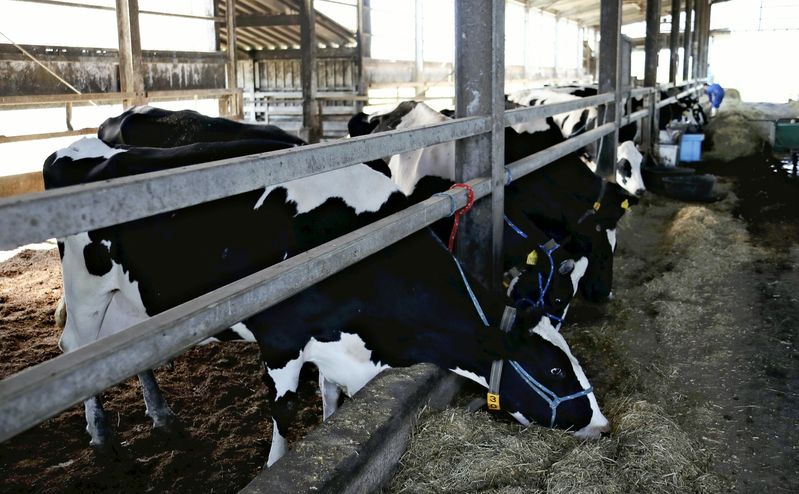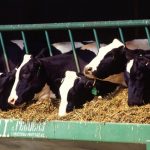
The pace of the decline is equivalent to almost three households giving up dairy farming every day. Reasons for the decline include a harsh working environment that allows few days off and a lack of willing successors. Its effects are beginning to be seen, such as in rising retail prices for milk.
Production down 15%
According to the agriculture ministry, the 37,400 dairy farming households nationwide in 1998 had dropped to 15,700 households in 2018, equivalent to 1,085 households per year giving up the business.
Production of raw milk, which is used to make milk and butter, fell from about 8.57 million tons in 1998 to about 7.29 million tons in 2018, a 15 percent decline.
With most dairy farming households being family-run businesses, labor shortages and the difficulty of securing successors are major factors behind the decline.
“With just me and my wife, this farm might be done,” said a sad-looking dairy farmer in Ogano, Saitama Prefecture, standing alongside his wife. The couple are both 55.
The man inherited the farm from his father about 30 years ago and ever since has raised 70 dairy cows and 50 head of beef cattle with his mother and wife.
He employs two part-time workers to help with milking, which must be performed daily in the morning and the evening. He barely has a day off and his 23-year-old eldest son, a university student, does not intend to take over the farm.
“Someday, I might have to hand over the cow barn, dairy cows and equipment to a third party,” the man said worriedly.
18 days off yearly
A survey by the Tokyo-based Japan Dairy Council found that the average dairy farming household in Hokkaido had 77.7 milkable cows, compared to only 43.4 cows in the other 46 prefectures, indicating many operations in the latter are small-scale. The average age of non-Hokkaido dairy farmers is older, with about 80 percent being at least 50 years old.
Nationwide, dairy farmers get an average of 17.7 days off per year, or only one or two days per month. They also work long hours. Farmers who have no successors will think twice about investing in equipment. Common reasons for stopping farming include aging and disease.
In addition, the Trans-Pacific Partnership free trade pact that went into effect last year is expected to increase dairy imports.
According to Yoshiharu Shimizuike, a lecturer on agricultural economics at Hokkaido University, production in Hokkaido supports consumption in the other prefectures. In fiscal 2017, Hokkaido delivered 400,000 tons of raw milk and 390,000 tons of milk in cartons to the rest of the nation.
“Transport capacity is limited due to a lack of drivers,” Shimizuike said. “Policies to prevent the number of dairy farmers from declining in prefectures outside Hokkaido are needed.”
¥7 more per carton
A decline in dairy farming households will also affect the stable supply of raw milk.
According to the agriculture ministry, since April the price of a regular-size carton of milk in supermarkets and other retail outlets has risen by about ¥7.
In addition, the priority when processing raw milk is to make milk for drinking, creating a shortage of raw milk for making cheese, butter and other dairy products. Imports are making up for that shortage.
Due to factors such as the growing popularity of cheese, domestic consumption of dairy products is growing. There has also been growth in imports of dairy products, going from 4.05 million tons in fiscal 2013 to 5 million tons in fiscal 2017, about a 20 percent rise.
“If things continue as they are, it will be difficult to maintain a stable supply of dairy products through domestic production,” said a Japan Dairy Council official.























